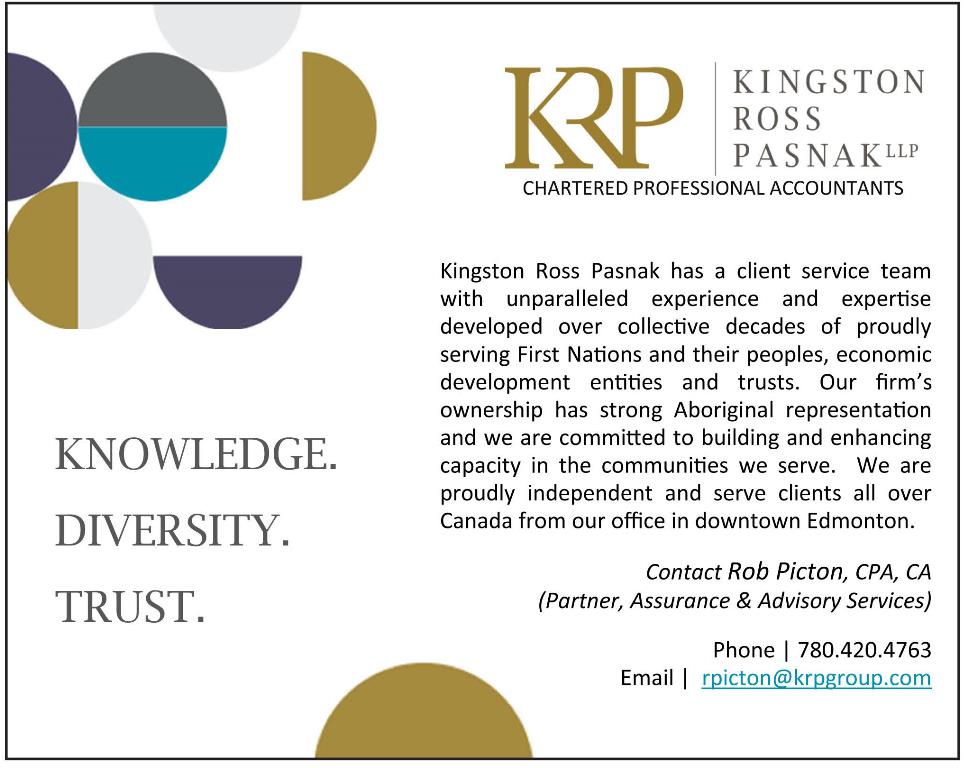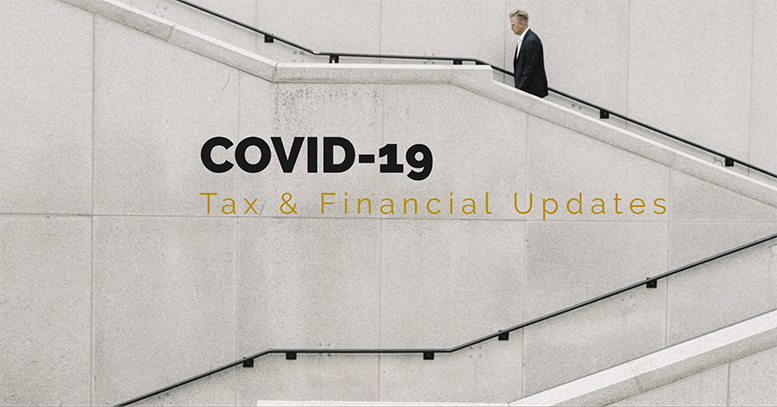By Rob Picton, CA, CPA
(ANNews) – Our previous article from the April 2018 edition of Alberta Native News outlined the complexity arising when Canada’s Income Tax Act intersects with Section 87 of the Indian Act, which provides a tax exemption to Indians on income sufficiently connected to a reserve. The waters become even murkier when we throw in the myriad of Canada’s COVID-relief measures, which we try to outline below.
The Canada Revenue Agency notes on its website that “we recognize that many First Nations people in Canada prefer to not describe themselves as Indians. However, we use the term Indian because it has legal meaning in the Indian Act.” For the same reason, this article uses the same term.
Canada Emergency Response Benefit (CERB)
The CERB was introduced to provide individuals who stopped work due to COVID-19 with relief of $500 per week from March 15 to September 26, 2020. To qualify, an individual must have earned at least $5,000 of income from defined sources (most commonly employment or self-employment) in 2019, or in the 12 months before application, as well as meet certain other conditions. The CERB is generally taxable income; however, if the $5,000+ of qualifying income was tax exempt under Section 87 of the Indian Act, the individual’s CERB will also be exempt from tax. If an individual’s qualifying income was not exempt under Section 87, the CERB will default to taxable.
There are a number of outcomes that could result if one’s income was a combination of taxable and exempt; generally, in these cases, the CERB will be treated in the way most advantageous to the individual. However, CERB recipients should be aware of the possible complexities of receiving and reporting CERB while relying on Section 87 to keep the income exempt from tax. Furthermore, as T4A slips will be issued to CERB recipients, care may be necessary in reporting the income on one’s 2020 personal tax return to ensure that the CERB benefit is treated consistently with the 2019 income on which the CERB application was based.
CRA has not commented on the other income replacement benefits, such as the Canada Recovery Benefits; however, their position in respect of CERB is consistent with other income-replacement benefits, like employment insurance, so it seems likely a similar interpretation would apply.
T4 Reporting – for all First Nation businesses and governments with payroll
CRA has included four new boxes to be reported on 2020 T4 slips (Boxes 57, 58, 59, and 60). These boxes are to report the amount of employment income included in either Box 14 (employment income) or Box 71 (Tax exempt employment income earned by an Indian) paid during the CERB periods of March 15 to May 9 (Box 57); May 10 to July 4 (Box 58); July 5 to August 29 (Box 59); and August 30 to September 26 (Box 60). The purpose of this new reporting is to enable Canada Revenue Agency to verify that CERB recipients did not have income in the periods in which they received CERB (since loss of income due to COVID-19 is the main requirement).
All entities who prepare T4’s for 2020, including First Nation governments and First Nation-owned businesses are required to complete Boxes 57-60 on their 2020 T4`s whether or not they participated in any of the programs.
Canada Emergency Wage Subsidy (CEWS)
CEWS will pay a business for a portion of its employees’ salaries and wages. When CEWS was originally introduced, Indigenous government-owned corporations and partnerships with Indigenous government partners were not considered eligible employers. However, in May 2020, this restriction was removed. CEWS has required a reduction in revenue for a business to be eligible; this requirement has had several forms since being introduced. The deadline for CEWS application for the first five periods (ending August 1, 2020) closed on January 31, 2021. However, CEWS is extended at least until June 2021, and possibly beyond.
First Nation governments are not eligible to claim CEWS.
Canada Emergency Rent Subsidy (CERS)
This subsidy provides relief of up to 65% of eligible expenses to qualifying businesses, charities and non-profits. The support is applied for by tenants who have experienced a drop in revenue, due to COVID-19, and generally applies to rent on land or buildings used in the ordinary course of business. To apply, the landlord must be “arm’s length” from the tenant, i.e. the landlord and the tenant are not related or controlled by the same people. This can be a grey area. Generally, this subsidy will be most applicable to businesses operating off-reserve. For an on-reserve business to qualify, it would need to have a formal rental agreement documented between the tenant and the landlord, even if the landlord is the First Nation.
Where the business owns its own real estate, a claim may be available for insurance, property tax and mortgage interest costs. A similar claim may be available to a building owner who receives rent on the property from non-arm’s length tenants.
For organizations that were temporarily shut down by a mandatory public health order issued by a qualifying Public Health Authority, there is a further top up of 25% bringing the total these businesses may receive to 90% of eligible expenses.
Temporary Wage Subsidy (TWS)
This subsidy was amongst the first measures taken by the federal government to assist businesses to cope with COVID-19 cash flow difficulties. It allows for a reduction in a payroll remittance of up to 10% of employees’ wages paid between March 18 and June 19, 2020, to a maximum of $1,375 per employee, or $25,000 for each employer. This subsidy is available even on tax-exempt wages reported on Box 71 of the T4 and it is available to most private business employers. It is not available to First Nation governments. Employers who wish to claim the TWS are required to file form PD(27) to Canada Revenue Agency. At the time of this writing, there has been no deadline announced on this filing.
Highly Affected Sectors Credit Availability Program (HASCAP)
This newly announced measure was introduced to assist businesses that have been heavily impacted by COVID-19. While certain sectors have been mentioned by the government, any business which has suffered significant revenue declines and meets other criteria can qualify. For these businesses, low-interest loans guaranteed by the Government of Canada from $25,000 to $1,000,000 may be available from your financial institution to cover operational cash flow needs. The loans carry an interest rate of 4%, a repayment term of up to 10 years and allow for interest only payments for the first 12 months. There are a number of eligibility criteria for this program that must be met and you can review these with your primary financial institution or online at https://www.bdc.ca/en/special-support/hascap. Applications must be completed by June 30, 2021.
Conclusion
COVID-19 had clearly wreaked havoc with our economies and ways of life. The subsidies introduced by the federal government, while well-meaning, have shortcomings and can add complexities for businesses and individuals trying to access them. The information above is accurate at the time of writing; however, these measures have evolved over time and we expect them to continue to morph as the needs arise.
Rob Picton is a Partner at Kingston Ross Pasnak LLP. This article was written with significant insight from Hugh Neilson, FCPA, FCA, TEP, an independent contractor to Kingston Ross Pasnak LLP, where he is Director of Taxation Services.







Be the first to comment on "COVID-19’s impact on First Nation businesses, taxes and reporting"